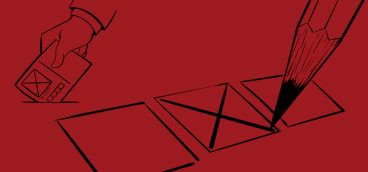Solomon’s Story

For readers who missed part 1 of this series of posts, I am summarizing a fictional novel written almost forty years ago.
While the leaders of the Georgetown Convention are consolidating their hold on the U.S. government, we need to introduce Dr. Michael Solomon, an eminent professor of psychology and long-time friend and colleague of Grace Atkinson. In the novel, Dr. Solomon plays an extended role, but in this summary we’ll skim over him lightly.
Michael Solomon’s father, Nate, grew up in Brooklyn, N.Y., in a family that boasted a long line of rabbis. Nate often claimed that, except for the Puerto Rican gangs that preyed on the Jewish kids, he didn’t meet someone who wasn’t Jewish until he was fourteen.
Nate, however, had no interest rabbinical studies or any other kind of studies for that matter. At college he enjoyed his science and engineering courses but didn’t bother to attend classes in the humanities or social sciences and flunked out after his sophomore year. Nate was good with his hands, an inveterate tinkerer, and a serious disappointment to his family.
Just before World War II, Nate invented a shadow mask cathode-ray tube technology that produced bright and sharp color images on a screen. Like most of Nate’s inventions, there was little practical use for the technology, but, as a precaution, both RCA and CBS agreed to license the technology and to pay royalties.
The royalty payments were based on a tiny percentage of the gross revenues produced using Nate’s version of shadow mask CRT, but there was no cap on the payments, since no one could imagine any mass use of Nate’s invention.
But in the late 1940s and early 1950s, color TV became all the rage. In addition to RCA and CBS, Nate licensed his invention to Philco, Admiral, Emerson, Motorola, Raytheon and others, and by the mid-1950s Nate Solomon was a very wealthy man. He was also no longer a disappointment to his family.
Nate’s son, Michael, was a throwback, however. A shy, deeply introspective boy, Michael seriously considered attending rabbinical school. However, this so annoyed his father that, instead, Michael got a Ph.D. in psychology from Brandeis, specializing in the field of human intelligence. He joined the faculty at Columbia and during World War II served as an intelligence analyst with the OSS.
By 1952, Dr. Solomon was renowned enough in his field that he was lured away from Columbia by the University of Chicago, where he was given the prestigious Marshall Field Chair in Theoretical Psychology, and where he met Grace Atkinson.
Unfortunately in the late 1950s, all was not well in the field of human intelligence research. A number of scholars in the field had begun to focus on group differences in intelligence, exploring the possibility the different human groups (races, ethnicities, even genders) might not be equally intelligent.
Needless to say, this work proved to be extremely controversial, and the controversy gradually infected the entire field of intelligence research. This included work pursued by scholars like Michael Solomon whose research had nothing to do with group differences.
And there was another problem with human intelligence research. Although there existed a vast database of information on I.Q.s—every child in America and Europe took I.Q. tests every few years—there was a suspicion that the tests were biased or that they didn’t measure anything important.
Since I.Q. correlated strongly and positively with success in school, success in college, and success in later life, Michael Solomon wasn’t worried about the possibility that I.Q. tests didn’t measure anything important. The bias issue, however, was another matter.
By 1958, Dr. Solomon, working with neurologists at the University of Illinois, was speculating about intelligence tests that would avoid traditional I.Q. tests and, instead, rely on direct measurements of brain activity. In early 1959 he submitted a paper, coauthored by Dr. Ivan Kuznetsky, a neurologist at the University of Illinois, speculating about ways to study human brain capability directly.
To Solomon’s disappointment, the paper was rejected by all the main journals in the field. Supposedly, the rejection was based on the fact that the paper contained no data, but simply speculated about direct brain measurement and suggested new avenues for research. But Solomon knew full well that the rejections were really based on the journals’ fears that the paper was associated with the controversial subject of group differences.
A few months later, Dr. Solomon was invited to present his paper at a symposium at Washington University in St. Louis. Delighted, he accepted the invitation and, a few weeks later, found himself on the Washington University campus heading for the meeting site.
As he approached the building, he could see there was trouble ahead. Outside the building a dozen students and faculty were marching, holding signs accusing the scholars inside of being racist and sexist. Horrified, Dr. Solomon quickly passed through the pickets with his head down. That afternoon, he presented his paper to great interest, but then immediately left town. He knew he’d made a major career blunder.
Sure enough, back at the University of Chicago, Dr. Solomon was summoned to meet with the Dean of the Faculty, who wanted to know what the hell Dr. Solomon thought he was doing attending a “racist” symposium. Solomon pointed out that his paper was actually “anti-racist,” since it was proposing new ways of measuring intelligence that weren’t culturally biased.
But it was too late. Institutional support for Dr. Solomon’s work slowly dried up, and foundations that had supported his research for years suddenly lost interest.
Back in 1956 when Grace Atkinson’s husband had died, Grace had cried on Michael Solomon’s shoulder. Now it was Solomon’s turn to cry on Grace’s shoulder. In fact, everyone except Grace herself knew that she was in love with Michael Solomon.
But while the Solomon-Atkinson relationship never evolved into actual romance—Solomon was married—it proved to be hugely consequential in terms of the cross-fertilization of knowledge between the two scholars. The long discussions Grace began with Michael Solomon in 1959 would, eventually, profoundly affect her view of how America should be governed.








